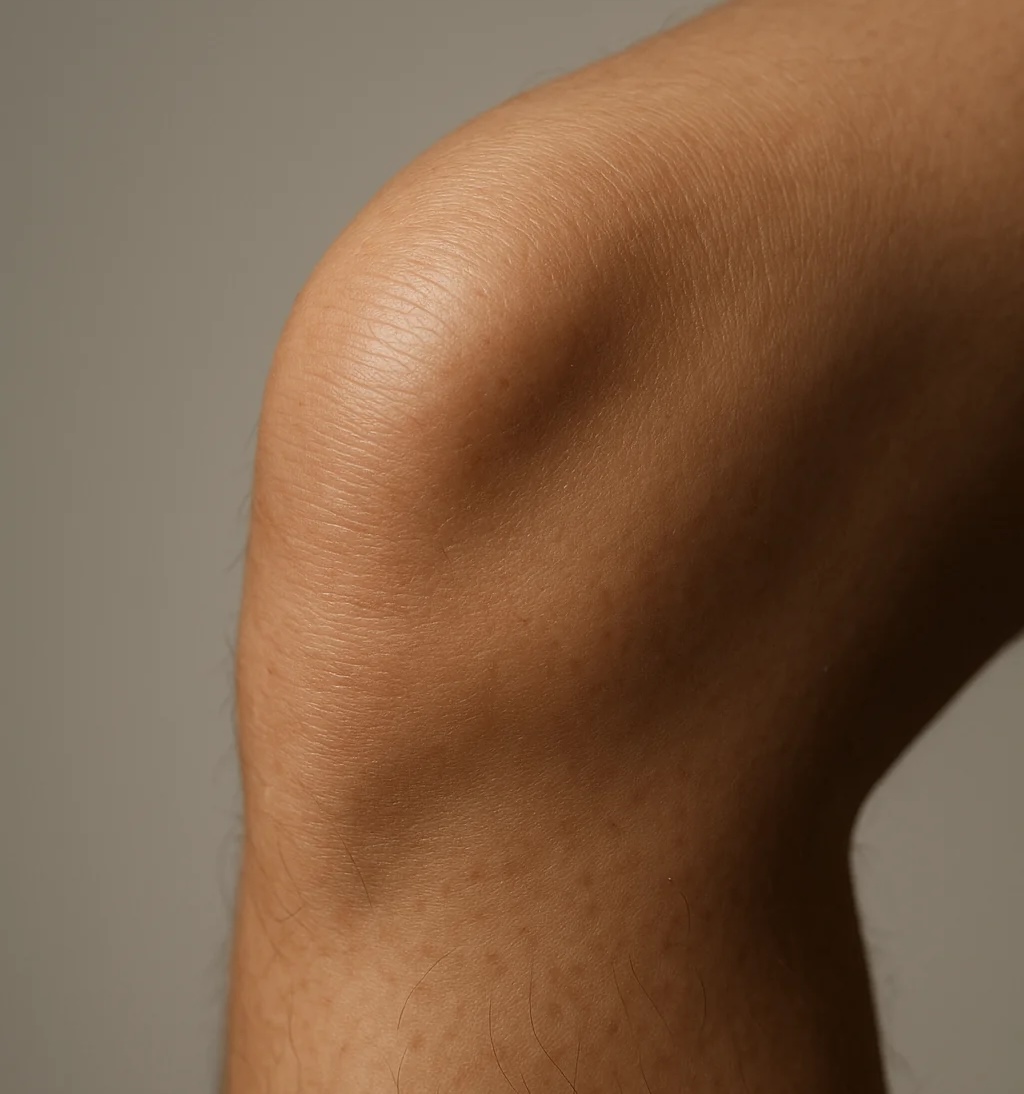See Also:
Rehabilitation Goals
- Reduce pain and swelling
- Restore full range of motion
- Regain normal walking without a limp
- Improve quadriceps and lower limb strength
- Return to full functional activities and sport as appropriate
Expected Recovery Time
| Milestone | Timeframe |
|---|---|
| Weight-bearing as tolerated | 0–1 week |
| Return to work (sedentary) | 1–2 weeks |
| Normal gait without limp | 2–3 weeks |
| Begin light jogging | 4–6 weeks |
| Return to sport (non-contact) | 6–8 weeks |
| Return to full sport | 8–12 weeks |
Phase 1: Early Post-op (0–2 weeks)
Goals
- Control pain and swelling
- Restore knee extension and flexion range of motion
- Begin quadriceps activation
- Promote independent ambulation
Instructions
- Use crutches as needed for comfort; gradually wean off as tolerated
- Apply ice packs 15–20 minutes, 3–5 times daily to control swelling
- Keep the leg elevated when resting
- Avoid prolonged standing or walking initially
- Use compression and keep the wound clean and dry
Exercises
- Ankle pumps: hourly when awake
- Quadriceps sets: hold 5–10 seconds, 10–15 reps, 3–5 times daily
- Heel slides to improve flexion: 10–15 reps, 3 times daily
- Passive and active-assisted knee extension to full range
- Straight leg raises (if no lag): 10–15 reps, 3 sets
Phase 2: Intermediate Recovery (2–6 weeks)
Goals
- Achieve full range of motion
- Normalize gait pattern
- Increase strength and endurance
- Improve proprioception and balance
Instructions
- Discontinue crutches if walking without a limp
- Begin light stationary cycling (low resistance)
- Avoid high-impact activities or pivoting movements
Exercises
- Continue Phase 1 exercises as needed
- Wall sits (within comfort range): 30–45 seconds, 3 sets
- Step-ups: 10–15 reps, 2–3 sets
- Mini-squats (0–45°): 10–15 reps, 2–3 sets
- Balance training (e.g., single-leg stands on stable surface)
- Seated leg press (light resistance, 0–60° range)
Phase 3: Advanced Strengthening (6–10 weeks)
Goals
- Restore near-normal strength
- Enhance dynamic balance and coordination
- Begin impact and agility drills (if appropriate)
Instructions
- Gradually introduce more dynamic and sport-specific movements
- Monitor for swelling or pain after increased activity
Exercises
- Progress to closed-chain strengthening (e.g., lunges, step-downs)
- Proprioception drills: wobble board, single-leg stance with perturbations
- Light plyometric exercises: jump rope, mini hops (bilateral, then single-leg)
- Treadmill jogging or outdoor running if pain-free
- Continue cycling or elliptical for endurance
Phase 4: Return to Sport and Maintenance (10–12+ weeks)
Goals
- Regain full sport-specific strength, speed, and agility
- Safely return to pre-injury level of activity
- Maintain joint mobility and muscle balance
Instructions
- Only progress to full sports participation if strength is symmetrical and knee is pain-free
- Warm-up adequately before sports
- Continue regular strengthening and mobility exercises
Exercises
- Sport-specific drills (e.g., cutting, pivoting, lateral movements)
- Agility ladder, cone drills
- Resistance training (full lower limb program)
- Maintenance of flexibility (hamstrings, quadriceps, calves)
When to Contact Your Surgeon
- Fever over 38°C or chills
- Wound redness, drainage, or unusual swelling
- Calf pain or swelling (potential sign of deep vein thrombosis)
- Knee locking or giving way
- Persistent or increasing pain beyond 2–3 weeks post-op
- Concerns about mobility, range of motion, or exercise tolerance
Disclaimer:
This is a general guideline. Your physiotherapist or Dr Lambers may adjust the protocol based on your specific condition and progress.
